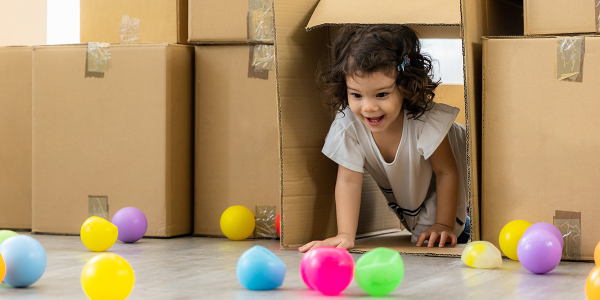Ask Hello. At What Age Should Children Be Introduced to STEM?

You are here
 NAEYC’s HELLO online forum is a great place to have conversations and create connections with peers around important early learning issues.
NAEYC’s HELLO online forum is a great place to have conversations and create connections with peers around important early learning issues.
Excerpts from HELLO have been edited for style and length.
Question
Isn’t STEM better suited for students in 6th through 12th grades rather than younger children? Are young children able to understand and remember STEM concepts?
—John, New Jersey
Answers
It is never too early to introduce STEM topics with children. I do a weekly STEM program at my library geared for 3- to 5-year-olds. When working with younger children, introduce basic concepts and vocabulary. For example, one week we focused on the life cycle of frogs. We had live tadpoles and a frog skeleton for the children to observe. We counted frogs and discussed the life cycle of the frog (egg, tadpole, froglet, frog).
—Christina, California
All of the experiences that children have—from birth on—inform them and become part of them whether they remember them concretely or not. STEM activities are no different. Young children are learning how the world works, and all of the experiences that they have inform that. To me, the best we can give them is the opportunity for exploration in every realm (cognitive, social and emotional, etc.). A 3-year-old can participate in activities such as watching a caterpillar make a chrysalis, playing with blocks, or baking. These are all STEM activities—and involve many other domains as well—and are all developmentally appropriate.
—Aren, Massachusetts
I think many early childhood educators have been incorporating STEM for many years, without labeling it as STEM. In preschool, science centers can include activities such as planting seeds or cooking. Board games like Chutes and Ladders or Connect 4 lay the foundations for basic coding skills. Children can explore the foundations of engineering by playing in the block center, building ramps for matchbox cars, or building forts outside. Preschool math skills include counting, sorting, and classifying. There are so many things that occur naturally during the course of our days that incorporate STEM ideas; we just have to look for them and, if needed, expand a little.
—Karin, Connecticut
To introduce STEM to preschoolers, I think it is important to have a hook, such as giant bubbles, chemical color changes, or 3D shapes. Preschoolers need to view concrete behaviors from the world around them. Spread the STEM activities throughout the centers. This could be measuring in the kitchen center (math), incorporating paper cylinders to advance block play (engineering), including pumps in water play (technology), and using natural materials to make diagrams (science). Keep exploring, and you can model how scientists and engineers work by asking questions and working together for the answers.
—Laura, Colorado
Do you have questions or suggestions to share with your peers? Are you simply interested in reading different takes from early childhood educators around the country? Tap into the vibrant discussions on HELLO at hello.naeyc.org/home.
Copyright © 2024 by the National Association for the Education of Young Children. See permissions and reprints online at NAEYC.org/resources/permissions.